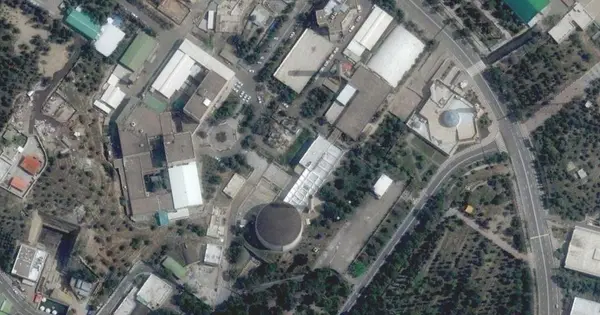The Dark Legacy of Nuclear Technology: From Peace to Conflict
The recent deployment of bunker-buster bombs by the United States against Iranian nuclear facilities amid an ongoing conflict has reignited discussions about the complex history of nuclear technology and its implications. Surprisingly, the same country pursuing military actions against Iran provided the seeds of its nuclear program decades earlier, under the guise of peaceful development. This intricate narrative traces back to the 1960s, during a period of Cold War tensions and shifting alliances.
Atoms of Peace
The “Atoms for Peace” program initiated by President Dwight D. Eisenhower was designed to share civilian nuclear technology with allies, under the pretext of promoting peaceful uses of atomic energy. Back then, Iran was a favored partner of the U.S., governed by the secular and modernizing Shah Mohammad Reza Pahlavi. The country was positioned as a model ally, eager to embrace modernization.
As part of this initiative, the U.S. supplied Iran with the Tehran Research Reactor and trained Iranian scientists at elite institutions such as MIT. This cooperation was intended to counter Soviet influence and demonstrate the benevolent side of nuclear technology. Ironically, this “starter kit” for nuclear development laid the groundwork for an intricate ecosystem of nuclear capabilities within Iran. Robert Einhorn, a former U.S. arms control negotiator, expressed this sentiment well: “We gave Iran its starter kit."
A Changing Landscape
Though the Tehran Research Reactor was limited in its ability to produce weapon-grade nuclear material, it became a symbol of national pride for Iran. However, it was the political and social landscape of Iran that underwent dramatic changes. In the 1960s, the country was under a monarch who was keen on modernization and perceived as a close ally to the West. Pahlavi sought to make Iran a regional power and began discussing the nation’s right to produce nuclear fuel, a discussion that would come to haunt U.S.-Iran relations.
When U.S. concerns arose regarding Iran’s nuclear ambitions, Pahlavi sought assistance from other countries, including Germany and South Africa, in hopes of developing a more robust nuclear program.
US Hesitation and the Islamic Revolution
By 1978, growing apprehensions within the Carter administration led to restrictions on nuclear cooperation with Iran. The U.S. insisted on amendments to contracts that limited Iran’s ability to reprocess nuclear fuel without permission. Consequently, America halted shipments of reactors altogether.
The Iranian Revolution of 1979 further strained U.S.-Iran relations. The newly formed clerical regime, led by Ayatollah Ruhollah Khomeini, initially showed little interest in continuing the Shah’s nuclear projects. However, the devastation of the Iran-Iraq War in the 1980s prompted a reassessment of national security, leading Iran to seek nuclear capabilities once again.
The Role of Pakistan
During this transition, Iran turned to Pakistan for assistance. The Pakistani scientist Abdul Qadeer Khan became pivotal, helping Iran acquire centrifuges essential for enriching uranium to bomb-grade levels. The escalation of Iran’s nuclear program became a pressing global concern, as highlighted by Gary Samore, a top White House nuclear official during the Clinton and Obama administrations. He noted, “Iran’s enrichment program is not the result of U.S. assistance. The Iranians got their centrifuge technology from Pakistan.”
Despite the complex web of relationships that shaped Iran’s nuclear ambitions, the legacy of U.S. involvement looms large. U.S. policies that once aimed to cultivate peaceful nuclear capabilities inadvertently contributed to the creation of a nuclear threat.
A Continued Conflict
Today, the tensions persist. With recent military actions targeting Iranian facilities and discussions about a potential nuclear agreement resuming, the relationship between the U.S. and Iran remains fraught with challenges. The contrasting narratives of cooperation and conflict underscore the complexity of nuclear proliferation, rooted in historical decisions and geopolitical strategies.
As the world watches, the ramifications of these decisions continue to unfold, emphasizing the unpredictable nature of nuclear technology and the delicate balance of international relations. The legacy of the “Atoms for Peace” program, once a symbol of hope, now stands as a stark reminder of the unintended consequences of nuclear diplomacy.

)
